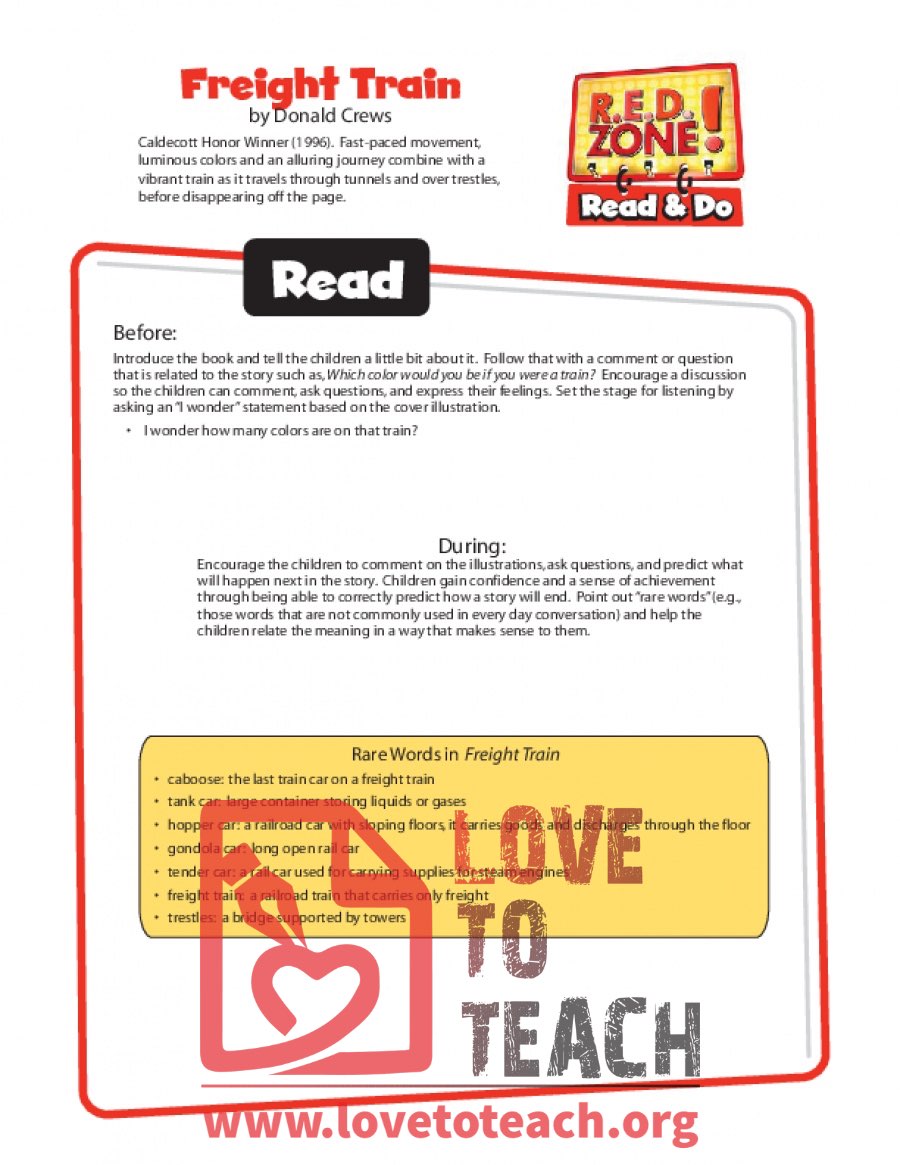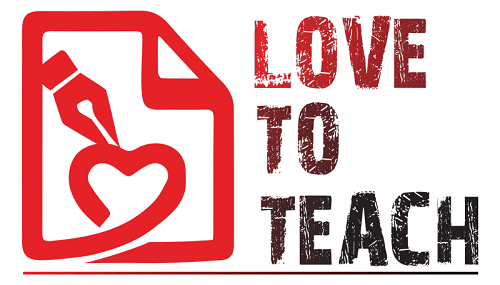Before:
Introduce the book and tell the children a little bit about it. Follow that with a comment or question
that is related to the story such as, Which color would you be if you were a train? Encourage a discussion
so the children can comment, ask questions, and express their feelings. Set the stage for listening by
asking an “I wonder” statement based on the cover illustration.
• I wonder how many colors are on that train?
During:
Encourage the children to comment on the illustrations, ask questions, and predict what
will happen next in the story. Children gain confidence and a sense of achievement
through being able to correctly predict how a story will end. Point out “rare words” (e.g.,
those words that are not commonly used in every day conversation) and help the
children relate the meaning in a way that makes sense to them.
Read
Rare Words in Freight Train
• caboose: the last train car on a freight train
• tank car: large container storing liquids or gases
• hopper car: a railroad car with sloping floors, it carries goods and discharges through the floor
• gondola car: long open rail car
• tender car: a rail car used for carrying supplies for steam engines
• freight train: a railroad train that carries only freight
• trestles: a bridge supported by towers
You will need: paper plates, liquid glue, paper cups, paintbrushes, and red, blue and yellow tissue
paper sheets
Give each child a paper plate, paper cup, paintbrush and one sheet of each color of tissue paper.
Fill the paper cup with liquid glue. Name the three primary colors of tissue paper and have the
children tear the paper into small pieces, then glue them on the paper plate. Next the children
will continue adding small pieces of tissue paper to the paper plate, overlapping some pieces to
create the new colors. When the new colors form, name the colors and explain how they made
orange, purple, green, etc. Continue this process until the children have all the colors represented
on their paper plate.
Do
After:
Discuss the story. Ask questions…
• What did the train drive on?
• What colors were the train cars?
• What were some of the names of the train cars?
• Which car was the color black?
• What happened to the colors when the train went through the cave?
• What did the train cross over?
• What happened to the colors when the train moved in the darkness? The daylight?
Freight Train

by Donald Crews - Caldecott Honor Winner (1996). Fast-paced movement, luminous colors and an alluring journey combine with a vibrant train as it travels through tunnels and over trestles, before disappearing off the page.
Download attachments:
Published in
Reading
